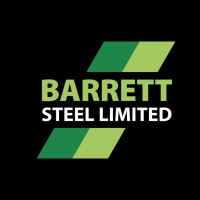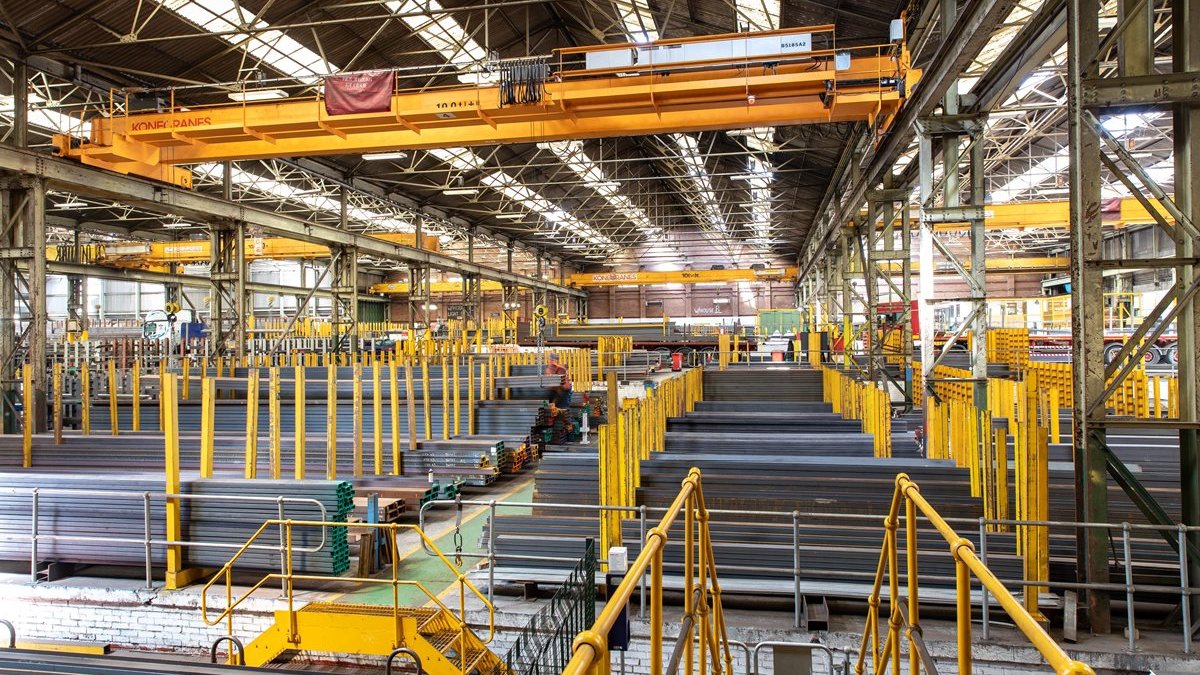
Barrett Steel are steel stock-holders, with 28 sites across the UK, generating £500m turnover per year. Barrett Steel have a USP in the market by selling ‘kits of steel’ to the construction industry.
- Operations director recognized issues with availability, uptime, and maintenance, but needed robust and proven solution to collect, analyze, and disburse vast amounts of operational data and also manage maintenance more intelligently.
- A Rockwell Automation solution was installed, which included:
- ThingWorx® SaaS-based SCP (smart connected products) package from PTC
- Fiix computerized maintenance management system (CMMS)
Based on pilot projects, asset utilization improvements will result in significant additional revenue (£ millions)
- Pilot site demonstrates increased productivity, more efficient logistics and reduced operational costs.
- 90% of the crane team’s maintenance work is now proactive
- Transportation is far more efficient, with loads matched to vehicle capacities
- Electrical consumption (including offices) being far more closely monitored, with shift-pattern based savings already identified and remedial action in place
- Data gathering and analysis already being broadened to other operational disciplines
“All the data was already there, we just weren’t collecting it… or using it,” explains Paul Burke, Head of Engineering at Barrett Steel, the UK’s largest independent steel stockholder.
A relatively simple premise that has since evolved into the driving force behind a remarkable digital transformation – underpinned by the ThingWorx® SaaS-based SCP (smart connected products) package from PTC and the Fiix computerized maintenance management system (CMMS) from Rockwell Automation.
This evolution has subsequently resulted in comprehensive savings in budget, unproductive machine time, employee hours, transportation and energy consumption, not to mention a completely revised proactive maintenance regime; and there is so much more to achieve.
Challenge
When he took over as Head of Engineering across all Barrett Steel’s sites, Burke applied a mindset that he had nurtured from his experience in manufacturing and set about identifying significant operational efficiencies across all facets of the company.
But these efficiencies would only become apparent if he had much clearer and deeper insights into the various operations, which included offices, cranes, loading, cutting, logistics and maintenance.
“I wanted as much operational data as possible, including power use, run time, downtime, repairs, vehicle locations and productivity, to name but a few,” Burke explains. “I needed contextualized operational data upon which I can base my decisions and help operations managers make their decisions – not just relating to one machine and one site, but across the entire enterprise.”
Solution
Initially concentrating on machine capacity and order turnaround, Burke’s first paper-based system underwent a rapid evolution. With the help of CHG Electrical – a trusted supplier of Barrett Steel and member of the Rockwell Automation PartnerNetwork as a recognized system integrator – the updated approach took the form of an electronic data-collection solution, with Rockwell Automation PLCs and software providing the all-important interface to the machine-level metrics.
Peter Clarke, CEO of CHG Electrical, explains: “Paul was looking to identify reasons for downtime, such as maintenance, lack of stock or staff availability. As such, we ran a trial on one machine at one site, and then extrapolated this data across all sites with similar machines. We quickly realized that there was a very strong business case for a large integration project encompassing 52 machines across 10 sites.”
At this stage, CHG and Barrett Steel agreed that dedicated software would be a better approach to cater for all the disparate data sources, the anticipated wider roll out, and eventual multi-site scalability. This decision led to the deployment of the ThingWorx platform and the Fiix CMMS.
Armed with these tools and a more streamlined ability to collect and analyze data, Barrett Steel and CHG started identifying other potentially data-rich operations that could be analyzed and improved.
Result
To date, the results have been hugely impressive. “We ran a trial on one machine at one site, which highlighted that a 1% improvement in utilization would result in £250,000 of additional income,” Burke enthuses. “Even a conservative improvement of 5% equates to more than £1 million of additional revenue. We then extrapolated the results across all sites with similar machines.
“We also looked at unplanned downtime and discovered that when we used industry-standard data – which is still very conservative – £5 million of downtime could be improved by simply better managing the 40 asset-care engineers. Even a 10% improvement equates to £500,000. It was this realization that led to the deployment of Fiix.
“90% of our crane team’s maintenance work is now proactive,” he explains. “In fact, using the original rudimentary approach, the payback on one site with eight machines would have been just six months; with Fiix rolled out across all sites, the payback will be just as impressive.
“Using ThingWorx to capture and collate the data, we have also identified surplus machine capacity on other sites to the tune of £300,000. If we equate this into capital expenditure for new cranes, loaders and forklifts, we justify the investment in ThingWorx for four years, in just one year’s savings.”
And it’s not just the heavy work that has benefitted from this new data-driven paradigm, Burke has also identified and measured other disciplines within the company’s operations.
“Thanks to ThingWorx being cloud based and offering open APIs,” Clarke continues, “we can pull in other disparate sources of data that previously weren’t being looked at by Barrett Steel and put them in context with other operational data. Logistics and energy usage are big parts of this.
“From the transportation side of things, we are looking at vehicles in terms of fuel use, miles travelled, and the weight of steel being moved. Armed with this, we can deploy the most suitable vehicles for the job. We also use ThingWorx to look at electrical use by measuring consumption based on shift patterns. We found that over £1.2 million or 40% of its electrical consumption was occurring during in non-operational shifts, due to lights being left on or equipment left running, so we immediately put a CO2 emissions reduction plan in place which would address air leaks, turn off unneeded machinery, sort out lighting ‘misuse’ with lux and presence sensors, and evolve the existing solar generation infrastructure. All these savings go onto the bottom line.”
“We’re not using true OEE at the moment,” Burke continues. “We’re just looking at utilization and availability, but we will introduce performance eventually. Quality is also not an issue as it is a very nominal benefit to us as scrappage rates are so low. We will certainly see productivity increases, but this is not a key metric at the moment, we’re currently at the issue-spotting stage.
“Having said that, on one site in Bradford, when we got its machines up to 80+% OEE/utilization, we certainly saw increased product onto vehicles and out of the door, a rise in the number of drivers out on time, and a significant reduction in driver and weekend overtime, due to planning around traffic and rush hours.
“We’ve also not lost sight of how important people are in the overall equation. People must work on and with the data. You can collect it and monitor it, but if you don’t act on it and make good operational decisions, which produce tangible results, then the motivation to use it falls. It is vital that you use it and be motivated to use it.
“Initially some operators thought we were observing them, but once we showed them that it was the machines under the spotlight and then showed them what we had learnt, there was a noticeable shift in attitude, which is even more apparent compared to lines that are not currently being monitored. Not only is the attitude different, but the productivity levels on the monitored lines are hugely improved. Looking at the project as a whole, we’re not there yet, but we can see the very bright light at the end of the tunnel.”
Burke saves the most convincing idiom until the end; and it’s the one he used in front of his management team after he had presented the business case for digital transformation. He simply said: “It’s up to you whether we can afford it or not, but I don’t think we can afford NOT to do it!”
Published June 27, 2024
